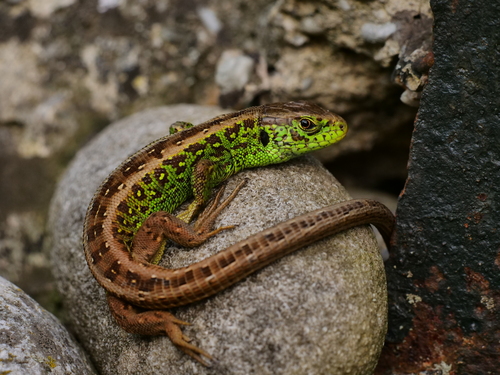
Sand Lizard
The sand lizard (Lacerta agilis) thrives in sandy heathlands and dunes, showcasing vibrant green scales and bold markings. Diurnally active, it plays a crucial role in controlling insect populations. Its dynamic courtship rituals and territorial prowess make it a fascinating denizen of European ecosystems.
6 years
Lifespan
10.0 - 15.0 g
Weight
Length: 13 - 20 cm
Size
Brown, Black, Tan, Green
Color
30 mph
Top Speed
Least Concern
Conservation Status
Stable
Population Trend
Distribution Range of the Sand Lizard
Lacerta agilis, commonly known as the sand lizard, is native to Europe and parts of Central Asia. Its geographical distribution extends across a broad range from Western Europe, including the United Kingdom and France, through Central Europe such as Germany and Poland, to Eastern Europe, including Russia. It is also found in parts of Scandinavia and reaches into the Caucasus and western Kazakhstan.
Sand Lizard's Habitat
Environmental Conditions
The sand lizard typically inhabits a variety of open and semi-open habitats. It prefers areas with sandy soils, which are essential for its reproductive processes as they allow for the digging of nests. Typical environments include heathlands, sand dunes, grasslands, coastal areas, and forest clearings. The climate across its range varies, but it generally involves temperate and continental conditions with warm summers and cold winters.
Ecological Niche
Lacerta agilis occupies a niche as a diurnal ectothermic predator, preying primarily on various invertebrates, including insects and spiders. It plays a role in controlling these populations within its ecosystem. The lizard's habitat choice is heavily influenced by its need for sunbathing spots to regulate its body temperature and the availability of suitable nesting sites for reproduction.
Copyright @ Nature Style Limited. All Rights Reserved.
 English
English